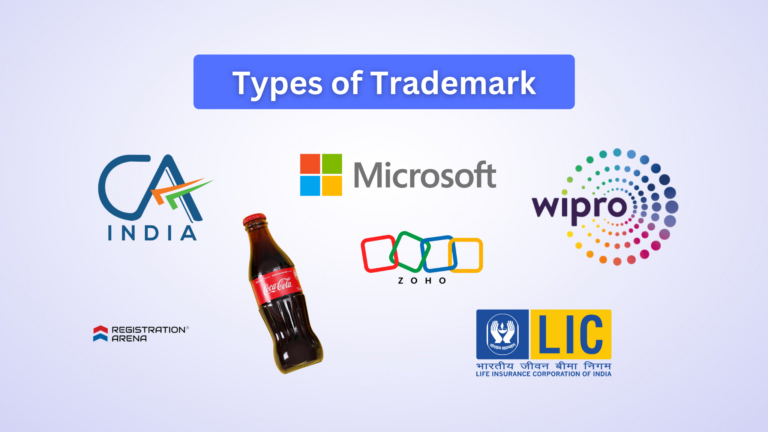DIRECTORS OF A COMPANY
A director is a person from a group of managers who leads or supervises a particular area of a company. He is appointed to manage the day-to-day management of the company. The director is supposed to report directly to the Vice President or to the CEO directly to let them know the process or status of the company. Large organisations also have assistant directors or deputy directors. It is the duty of the director to act lawfully and honestly and make decisions for the benefit of the company and its members.
STRUCTURE OF THE BOARD OF DIRECTORS
The structure of the board of directors depends upon the size of the organisation. Private Limited companies can have minimum 2 directors and maximum 15 directors according to the law. However, as organizations and businesses expand, the number of directors can increase because more tasks and responsibilities become present. Example: When a company expands it has more than one department like sales, finance, marketing, production and IT, and then a company may form a board of directors, with each director looking after a particular department.
Let us look at the clear board structure of a large business organisation:
- Executive Director: The role of an executive director is to look after the day-to-day management of the company. He is also involved in taking important decisions of the company.
- Non-Executive Director: The non-executive director does not have to take part in the day-to-day management of the company. They are the experts of the company. That is why the role of the non-executive directors is to advise and guide the business by proposing different forms of strategy and also decide remuneration of the executive directors.
- Managing-Director: The managing director is also known as a Chief Executive Manger of the company. A managing director is employed by the business, often by the chairman. Other roles include running the business and producing salaries. The managing director manages the board of directors and oversees the performance of the business, thus reporting back to the chairman.
- Independent Director: They are non-executive directors of a company and help the company to improve corporate credibility and enhance the governance standards. In other words, an independent director is a non-executive director without a relationship with a company which might influence the independence of his judgment. The tenure of the Independent directors the hall up to 5 consecutive years; however, they shall be entitled to reappointment by passing a special resolution with the disclosure in the Board’s report. Following companies need to appoint at the least two independent directors:Public Companies with Paid-up Capital of INR 10 Crores or more,Public Companies with Turnover of INR 100 Crores or more, Public Companies with total outstanding loans, deposits, and debenture of INR 50 Crores or more.
- Small Shareholders Directors: A listed company, could upon the notice of minimum 1000 small shareholders or 10% of the total number of the small shareholder, whichever is lower, shall have a director which would be elected by small shareholders
- Residential Director: A company needs to appoint a Director who has been in India and stayed for not less than 182 days in a previous calendar year.
- Women Director: A company is required to appoint minimum one women director in case:The company is a listed company and its securities are listed on the stock exchange.The paid-up capital of such company is INR 100 crore or more with a turnover of INR 300 crore or more.
- Additional Director: A person can be appointed as an additional Director and occupy this post until the next Annual General Meeting.
- Alternate Director: Alternate director refers to a personnel appointed by the Board, to fill in for a director who might be absent from the country, for more than 3 months.
- Nominee Directors: Nominee directors could be appointed by a specific class of shareholders, banks or lending financial institutions, third parties through contracts, or by Union Government in case of oppression or mismanagement.
- De Facto Director: A de facto director is a type of a director which is not formally appointed as a director but acts as one. He has to carry out the similar responsibilities and liabilities as an official director.
- Shadow Director: A shadow director is similar to the de facto director which means he does not have an official title of the director. However, he has some influence on the decisions of the board of directors.
Having a clear structure within the business leaves a positive impact on the employees and also keeps the business and its functions organized. If your business or a company has a problem or issue, it can be solved easily with the help of the team which includes Directors and employees.
DUTIES OF THE DIRECTORS OF THE COMPANY
The position of the director in any organisation comes with some duties and responsibilities. The directors should be aware of these duties and responsibilities and are expected to follow them:
- As the directors are in a strong position they should act according to the interests of the company and they should consider their company interests above their personal interests.
- The directors of the company do not have an ownership over the assets of the company but only have an effective control over them and it should be used accordingly.
- A Director is not allowed to disclose or make use of confidential information for any purpose other than for the benefit of the company.
- A conflict of interest arises when a person is in a position to derive personal benefit from actions or decisions made in their official capacity. This is not expected from the director; therefore, he should act as per company’s interests.
- A Director of a company must make best efforts to attend as many board meetings as he can. In India, if a Director is absent from three consecutive meetings of the Board, or from all meetings held in three months, whichever is longer, without obtaining leave of absence from the Board, then the Director could lose his/her Directorship in the Company.
- The Memorandum of Association (MOA) of a Company states what the company is authorized to do. Whereas, the Articles of Association (AOA) of the Company state what powers are given to the Directors of the Company. It is the duty of the Directors to ensure that not only do they keep within the company’s powers but also that hey keep within the powers actually given to them in the Articles of Association.

SHAREHOLDERS OF A COMPANY
A shareholder is an individual who legally owns one or more shares of stock in a public or a private company. The shareholders of a company can also be referred as the owner of the company. Legally speaking person is not a shareholder in a company until their name and other details are entered in the corporation’s register of shareholders or members. The shareholding percentage of a shareholder determines its influence on the company. The shareholders are not liable for the debts of the company and the shareholder’s liability for company debts are limited to the unpaid share price unless if a shareholder has offered guarantees. The corporation is not required to record the beneficial ownership of a shareholding, only the owner as recorded on the register. When more than one person are on the record as owners of a shareholding, the first one on the record is taken to have control of the shareholding, and all correspondence and communication by the company will be with that person. Shareholders may have acquired their shares in the primary market by subscribing to IPO and thus provide capital to the company. On the other hand, most of the shareholders acquire shares in the secondary market and provided no capital directly to the corporation. Shareholders may be granted special privileges depending on a share class. The board of directors of a corporation generally governs a corporation for the benefit of shareholders.
TYPES OF SHAREHOLDERS
Equity Shareholders:
Equity share is a share that is simply not a preference share. So shares that do not enjoy any preferential rights are thus equity shares. They only enjoy equity, i.e. ownership in the company.
The dividend given to equity shareholders is not fixed. It is decided by the Board of Directors according to the financial performance of the company. And if in a given year no dividend can be declared, the shareholders lose the dividend for that year, it does not cumulate
Preference Shareholders:
A preference share is one which carries two exclusive preferential rights over the other type of shares, i.e. equity shares. These two special conditions of preference shares are
- A preferential right with respect to the dividends declared by a company. Such dividends can be at a fixed rate on the nominal value of the shares held by them. So the dividend is first paid to preference shareholders before equity shareholders.
- Preferential right when it comes to repayment of capital in case of liquidation of the company. This means that the preference shareholders get paid out earlier than the equity shareholders.
RIGHTS OF THE SHAREHOLDERS
The shareholders of the company hold some rights in the entity which they should be aware of. The rights of the shareholders of a company are given here below:
- They have the right to sell their shares.
- They have voting rights such as they can vote on the directors nominated by the board of directors.
- They have the right to nominate the director and propose shareholder resolutions
- They have the right to vote on mergers and changes to the corporate charter.
- They have the rights of dividends if they are declared.
- They have the right to access certain information; for publicly traded companies, this information is normally publicly available
- They have the right to sue the company for violation of fiduciary duty.
- They have the right to purchase new shares issued by the company by way of right issue.
- They have the right to what assets remain after liquidation.
DIRECTORS VS SHAREHOLDERS
The role and responsibilities of a director and a shareholder is not the same. Due to separation of law people tend to get confused between the difference of a director and a shareholder. Let us understand it in detail:
- Directors are the managers of the company. Shareholders are the members of the company and they own the company by owing its shares.
- The Directors are involved in the day-to-day management of the company, whereas, Shareholders do not have to be involved in the management of the company.
- The Directors of the company receive salary and the Shareholders of the company receive a portion of the profits in relation to their shareholdings. The shareholders are entitled to receive part of profits as dividend and the directors are entitled to receive remuneration and sitting fees from the company.
- The rights and powers of a director are determined by the shareholders and they also have the right to appoint and remove directors and company secretaries of the company. The shareholders of the company cannot be removed from the company except by the order of any judicial or quasi-judicial bodies like NCLT. However, the shareholders, at their own discretion, transfer their shares to others.
- Crucial decisions can only be taken by the shareholders of the company. The directors only manage the day-to-day activities of the company. If permitted by the shareholders, directors can make decisions regarding the company.
- Ensuring that all required company taxes are paid on time is the responsibility of the director.
- If a company is owned and managed by a sole director and shareholder, one person alone will have all of these rights and responsibilities. It is important to be aware of these requirements and obligations before committing to limited company formation.Thus, both the directors and the shareholders are important for the positive running of the company. Their relationship is complex and both are dependent on each other. Hence, transparency is required to be maintained. Both should go hand in hand for the benefit of the organization as a whole.







